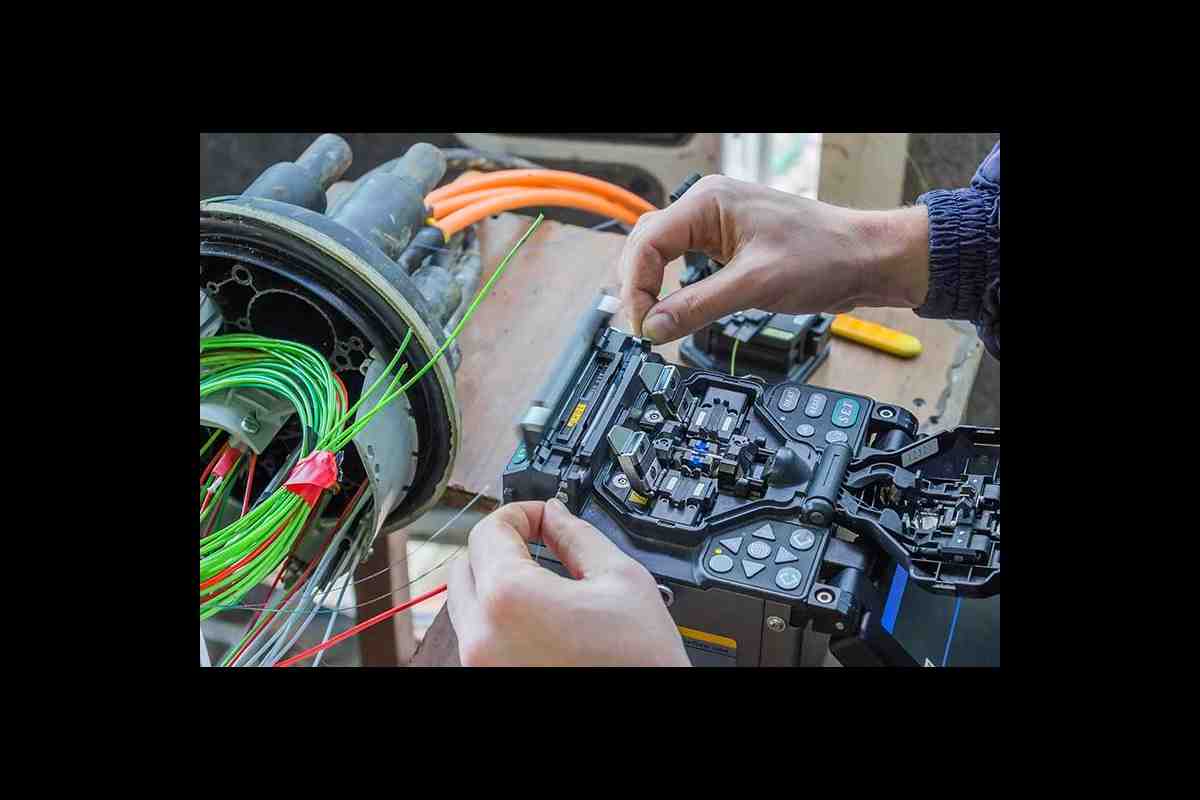

Three Main Building Blocks To Automate Network
Getting Your Networks in Ship Shape—One Fun Step at a Time
Ever thought about automating your network but felt like you’d need a PhD to get started? Let’s crack the code together, step‑by‑step, while keeping it light, lively, and totally human‑crafted.
1. Start Small and Simple
- Scope It Down – Pick a single device or a single subnet, not the whole empire.
- Mortgage the Mastermind – Make one firewall rule, one route, or even just a simple ping script.
- Celebrate Wins – Every successful auto‑config is a party. Cue the confetti!
Why the fuss? Because building a giant, all‑encompassing automation from day one is like trying to bake a 20‑layer cake with no oven in sight. Start with a cookie and, before you know it, you’ll have the whole bakery.
2. Proper Testing
- Test Lab, Not Live – Think of it as the “in‑house gym” for your network. Create a sandbox that’s a replica of your real environment.
- Unit Tests for the Fancy Bits – Break everything into micro‑tasks; run each one through a concise test script.
- Chaos Mode – Intentionally break things. See how the automation holds the line. If it falls… debug!
Remember, testing isn’t a one‑off. It’s a living, breathing process that keeps your network tighter than a drum skin. And hey—debugging is just another fancy word for “spotting the invisible glitch that hates your code.’
3. Network Validation
- Health‑Check Dashboard – Set up a quick dashboard that pings, checks latency, and confirms rules as they go live.
- Audit Trails – Keep a log file of every change. If you’d love to be mysterious, make the logs a rock‑star biography: Who updated what, when, and why.
- Reality Checks – Run actual user traffic through the new routes. The final verdict is whether the traffic feels the same or instantly speeds up.
Validation is your safety net. Without it, you’re building on sand. It’s your reminder that every code line is alive and matters.
Finally, Make It Work!
- Deploy – With everything tested and validated, push it to production. Small changes, big smile.
- Monitor – Set alerts. If something goes wrong, you know exactly where it’s happening.
- Iterate – The best automation is ever‑improving. Treat it as a project that blossoms over time.
You’ve set up your first automated network script. On the back of a napkin it probably looked like: “We set this up. We made it small. We tested it. Boom! And now the real triumph is that your network is smarter, faster, and—spoiler—less stressful for you.
Conclusion
The real secret to successful network automation is keeping it manageable, testing ruthlessly, and validating thoroughly. Start simple, test hard, and keep iterating. You’ll end up with a network that’s as reliable as your morning coffee—just with less caffeine.
Introduction
Cracking the Code: Making Your Network Work Like a Well‑Oiled Machine
Why Spend Time On Surprising Agility?
When you’re rolling out new apps or chasing down pesky network gremlins, speed is king. If the system or the team isn’t nimble, you’ll end up stuck in a loop of manual wrestles.
Network Automation—Your Secret Weapon
Think of automation like a friendly robot that takes over repetitive chores. It eliminates the “I have to click… wait…” delays and frees up your crew to focus on things that actually matter.
Feeling Overwhelmed? Let’s Turn the Chaos into a Fiesta
Here’s a playful roadmap so you don’t feel like you’re drowning in scripts.
- First Step: “The Low‑Hanging Fruit” – Identify the most recurring tasks that your team does every day. Automating these will give you instant wins.
- Second Step: “Prank the System” – Create small, isolated automation that triggers on simple events (like a sudden surge in traffic). It’s a gentle way to test the waters.
- Third Step: “Build Your Auto‑Commander” – Integrate your scripts into a single, manageable pipeline. Think of it as your own team of drones running on autopilot.
- Fourth Step: “Test, Tweak, Triumph” – Run your automation in a sandbox, tweak as needed, and then roll it out like a “feature flag.”
- Bonus: “Celebrate the Automation” – Once it’s live, celebrate the extra minutes your folks now have for coffee, brainstorming, or scrolling through memes.
Bottom Line
Start small, learn quick, and keep building. Before you know it, you’re running a network that moves faster than a cheetah on espresso, and your team will thank you for the time you’ve saved.
Starting with Network Automation?
Auto‑Do‑It: Power‑Up Your Firewalls, Not Your Downtime
Running a business that relies on a non‑stop network is like being stuck in a coffee shop that never closes—order stays up, the cappuccino stays hot, and the Wi‑Fi never drops. When you start pushing automation into this high‑stakes environment, a single wrong command can be the equivalent of unplugging the espresso machine mid‑espresso. The result? Suddenly you’re staring at a blinking 404 screen while the rest of the world keeps scrolling.
Why the Devil’s in the Details
- Scripts aren’t magic wands. They’re simply a series of typed commands that the network device will execute exactly as written.
- One typo, one mis‑rule, and you’re in trouble. Think of it as sprinkling salt into the coffee instead of sugar—it hurts the taste and the temperament.
- Network “downtime” is the pot roast of a virtual kitchen. Everyone can’t just keep on eating until the meal’s over.
Start Small, Scale Up, Stay Awesome
Don’t try to melt the whole boiler in one swoop. Think of your automation journey as a marathon with good warm‑up, cool‑down, and a lot of hydration.
- Pick a basic chore. Maybe you’re automating the daily check‑in of a firewall rule set. Just a quick “run this command, save the result” is enough to test who’s got the right syntax.
- Run, check, repeat. Every time you roll out a new script, verify: does it print the expected status? Does it leave any logs bacon‑flavored?
- Build a foundation. Once the simple piece is rock‑solid, use it as the “base layer” for more complex tasks. This way, if a higher‑level script misfires, it’ll hit the ground before breaking the entire network.
- Keep the fire on a low heat. Avoid executing all at once – stagger the automation. Think of it as adding a pinch of salt gradually to your broth.
In short, treat automation like a carefully seasoned meal: start small, test thoroughly, and only then add the next ingredient. That way, you’ll keep your network lively, your downtime minimal, and your IT crew happy.
1. Start Small and Simple
Getting Started with Automation: One Step at a Time
Automation isn’t a magic wand—you just have to start with the no‑fuss tasks.
Why the Beginner’s Path Works
- Keep it Read‑Only. Build simple scripts that can sniff around without actually touching the network. Think of “look, but don’t touch” mode.
- Run Diagnostic Checks. Track down a MAC address or hunt for the root bridge in a spanning tree domain. These are classic “I‑can‑do‑this‑in‑seconds” tasks.
- Save Time on Repetitive Work. Automate the investigative or diagnostic chores that you do all the time and that eat up your day.
- Stay Hands‑On. Don’t crank any “auto‑change” engines just yet. Focus on learning the tools that actually deliver value to the ops team.
What You’ll Gain
By tackling simple, read‑only scripts first, you get a clear sense of how automation can be harnessed without risking unintended changes. It’s the safest way to upscale your skill set while keeping the network safe and the ops team smiling.
2. Proper Testing
Network Automation: Testing is Key
Why Testing Matters
Just like writing code, automating network setups requires a solid testing routine. Think of it as sprinting through a marathon instead of just taking a leisurely stroll.
Scaling Dev Test Flows to the Network
Application developers enjoy a sweet spot: spin up a server VM, throw in a client VM, and run the tests automatically. In the network world, we’re still stuck in the old-timey lab scenario—expensive, time‑consuming, and not very forgiving.
Building Blocks for Less Chaos
- Use pre‑built components to limit the number of variations you must test.
- Many vendors provide virtual instances of their devices—often free or cheap, though they can be squishy in performance.
- Validate every configuration tweak on these virtual goodies; they’re the quickest way to uncover hiccups.
Collaboration Pays Off
To bake a test environment that truly mirrors your live network, band together with the rest of IT. Pull in the apps and the test clients that actually generate traffic; you’ll get a realistic feel for how things work under load.
3. Network validation
Intent‑Based Networking Mainsheet: A Cheerful Checklist for Your Network
Hey tech crew! Intent‑Based Networking (IBN) is the new shiny toy everyone’s chatting about. Before you let automation run wild, start with a trusty set of basic network checks. Think of it as a pre‑flight safety check for your digital highways.
Step 1: Verify the Network State
Take a quick look at:
- Device Interface Status – Are ports up or are they playing hide‑and‑seek?
- IP Address Assignment – Make sure every device got its own address, not a duplicate fashion faux‑pas.
- Neighboring Devices – Feel the vibe; are your routers keeping good company?
- Layer 2 & Layer 3 Protocols – Confirm that Ethernet, STP, BGP, etc., are doing their jobs.
Remember: This is a quiet check. No changes—just validation. If something looks off, the script will fire an alert faster than a toaster popping. Your teams can then swoop in and fix the hiccup before the automation takes the wheel.
Step 2: Convert Scripts Into Actionable Tools
Once you’re comfortable with the “no‑change” tests, turn those scripts into real‑time tools. They’ll be your pre‑change and post‑change sanity checks.
- Pre‑Change Validation – Run the script. If any check crashes the party, abort the change (no risky moves). That’s your safety net.
- Post‑Change Validation – After the wizardry, run the script again. If anything stutters, alert the network squad and consider rolling back.
- Rollback Confirmation – Should you decide to undo a change, run the pre‑change script one more time. It ensures the network returns to the blissful state it had before the tweak.
Why This Matters (And Why It’s Fun)
Think of these checks as your digital “red light” before a traffic jam: they stop the chaos, keep everyone on track, and give you a heads‑up if something’s wrong. Plus, having a systematic approach reduces the threat of rogue automation and keeps your network humming like a well‑tuned orchestra.
Takeaway
Start with a solid set of “no‑change” checks. Once you’re feeling confident, evolve those into dynamic, pre‑ and post‑change validators. It’s a simple yet powerful way to keep your network safe, reliable, and ready for the next big update.
Finally, Make it Work!
Ready to Automate Your Network?
When you’re juggling a network upgrade, the golden rule is reducing risk—think of it as your safety net that keeps the whole operation from turning into a circus.
Manual Method: The Old Guard
Right now, folks lean on change control boards and a pile of review cycles for every tweak. Those stalwarts will hang around, even as we bring in automation.
Automation: The Fresh Tricks
Automation spices things up with goodies like pre‑change checks and post‑change validation that run themselves. No more manual double‑checking, no more guessing about the outcome.
Getting Started – Play it Safe
- Start with read‑only actions—the kind that won’t slam your network into chaos if something slips.
- Don’t wait to feel the excitement; the sooner you automate, the faster your network gets a performance boost.
Bottom line: Grab the automation tool, get those checks, and let your network run on autopilot. The risk stays low, the upsides pile up—easy peasy.
Conclusion
Bye‑Bye Human Error, Hello Seamless Speed
Ever notice how a tiny human slip‑up can bring the whole network to a screeching halt? It’s the classic “human error” villain that steals performance and knocks uptime down. The good news? Automation is the hero that catches those slip‑ups before they break the system, turning chaos into calm.
Why Automation Wins the Day
- Reliability on Steroids: Automated checks and balances mean fewer downtime surprises.
- Speed to Market: Rolling out new services becomes a sprint instead of a marathon.
- Customer Delight: With fewer hiccups, end‑users get the smooth experience they expect.
- Scalability Made Simple: Equipment and software updates happen on autopilot, letting the network grow without growing pains.
Breaking the Silos That Stifle Automation
For automation to truly shine, it must break free from the old “silo” mentality that keeps different teams and systems isolated. Think of it as the ultimate team‑up: every piece of network gear, every support desk, every operation script gets to play in the same orchestra.
Blue Planet: Your Automated Playbook
Here’s where Blue Planet steps in – providing a clean, streamlined architecture that ties the whole IT operation together. Their tools and playbooks are built on an open, standards‑based framework, making it easy to:
- Provision Networks: Jump‑start new setups with just a few clicks.
- Manage Today: Keep everything humming in real‑time.
- Orchestrate Tomorrow: Plan, deploy, and tweak as the network evolves.
In short, by automating every stage of the lifecycle – from the first wire to the final orchestration – Blue Planet turns a sprawling, complex network into a finely tuned, efficient powerhouse.







